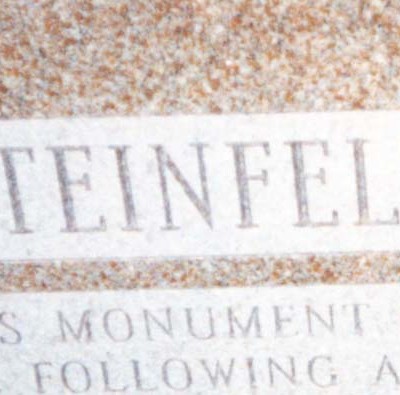
The area now known as New Brighton was settled in the late 18th century and incorporated as a borough in 1838. Transportation corridors including the Ohio River, the Pennsylvania Canal and later various railroad lines and highways brought people to the area.
The first Jewish family in New Brighton was Raphael and Rosa Steinfield, who immigrated to Beaver County from Prussia in 1854. They lived briefly in Rochester, Pa., before settling in New Brighton. Although Raphael Steinfield claimed to have practiced medicine in Europe, he decided to open a butcher shop in New Brighton. With his son Coleman, he started a successful men’s clothing store in 1867 and eventually closed the butcher shop in 1873, according to the volume History of New Brighton 1838-1938.
In the decade after the Steinfeld family arrived in New Brighton, several more Jewish families settled in the borough. They organized Tree of Life Congregation about 1862, although it appears they never legally incorporated the congregation. The congregation leaned toward a liberal style of observance and worship. According to local historian Jacob Feldman in his volume The Jewish Experience in Western Pennsylvania, A History: 1755-1945, twelve Jewish families living throughout Beaver Valley, including some in New Brighton, arranged in December 1871 for Rabbi Judah Wechsler, a noted Reform rabbi from Columbus, Ohio, to come to New Brighton. His address at a local church drew a Jewish and non-Jewish audience, which was an unusual occurrence at the time.
Toward the end of his life, Raphael Steinfeld established a small cemetery, alternately known as the Steinfeld Cemetery and the Tree of Life Cemetery. The majority of the burials are members of his family and occurred between 1888 and 1919, although the most recent burial appears to have been as late as 1949. By the late 1980s, the Steinfeld Cemetery had fallen into disrepair, and a group from Beaver Falls, working with a committee of the United Jewish Federation in Pittsburgh, assumed responsibility for maintaining it.
After Raphael Steinfeld died in 1882, the few Jewish families living in New Brighton largely (although not entirely) began to worship at Agudath Achim, a new Orthodox congregation established by Lithuanian immigrants in nearby Beaver Falls. Divisions between the two New Brighton and Beaver Falls contingents persisted for several years, which Feldman cited as one reason why Agudath Achim did not build a synagogue until 1914. Even after the two towns became a single community, the Jewish population of New Brighton remained sizable. The American Jewish Yearbook listed a population of 95 in its 1928-1929 edition and a population of 250 in its 1940-1941 edition.